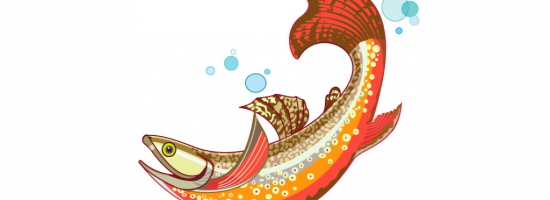Astaxanthin

Astaxanthin (asta-ZAN-thin) is the most abundant carotenoid in the marine world. It can be found in many different sea creatures such as salmon, trout, shrimp, and krill giving them their pinkish/orange coloring. Astaxanthin cannot be synthesized by animals and must be consumed in the diet. Fish get it by eating algae. One more reason to buy wild catch over farmed fish. The richest commercial source for natural astaxanthin is haematococcus pluvialis microalgae.
Astaxanthin came to my attention as historically I have treated RLS (restless leg syndrome) with high dose krill oil, or by having my patients eat salmon three times a week. I started musing on why salmon and krill worked for this neurological condition and other beneficial marine supplements did not, and connected that both have a pinkish/orange coloring. This is what led me to take a close look at astaxanthin.
Astaxanthin is a powerful antioxidant, having a property similar to lipoic acid in having the ability to cross both the blood-brain barrier as well as the blood-retinal barrier. It is thought of as a universal antioxidant, being able to reach every cell of the body.
Astaxanthin has many specific uses in the body. My initial use of it was for neurological conditions including restless leg syndrome. I now routinely use it to help people feel more solid, when they are overly stressed, which has wide applicability in our culture.
Dr. Nicholas Perricone, one of the leading anti-aging experts, recommends it for reducing wrinkles and age spots, and giving the skin a healthy, beautiful glow. Many users of astaxanthin report that they can spend more time in the sun without burning than before.
Athletes have discovered Astaxanthin for its ability to increase endurance through its beneficial effect on the mitochondria. The mitochondria are the energy powerhouses of our cells. It also reduces lactic acid, allowing your muscles to recover more quickly after intense workouts.
Researchers have found that Astaxanthin has a liver protective effect when giving it while feeding rats carbon tetrachloride. It also boosted both glutathione and superoxide dismutaste (SOD) levels in these studies, by helping recycle these important antioxidants.
Astaxanthin is a powerful anti-inflammatory. It is used for many types of joint, muscle, and connective tissue pain. It has wide applicability being used for everything from arthritis to tennis elbow.
Astaxanthin frankly has too many uses to go into detail here, but some of its effects include to modulate the immune system, normalize blood pressure, for gum disease, to help prevent heart attacks, treat diabetes, prostate problems, eye conditions. This is a very important and inexpensive supplement and at our clinic, we are just beginning to give it to patients for a wide variety of complaints, besides neurologic conditions where it is very valuable.
